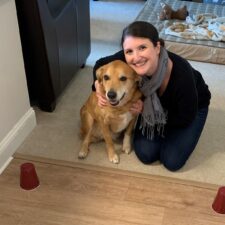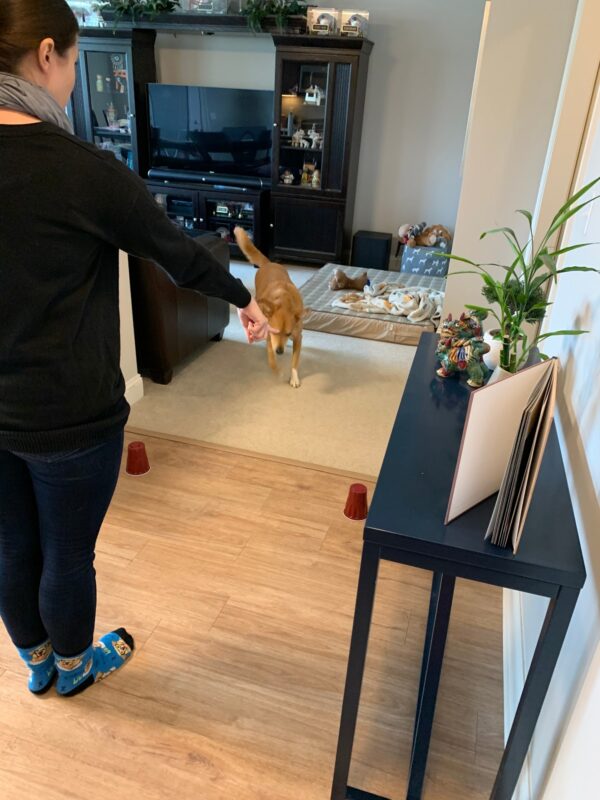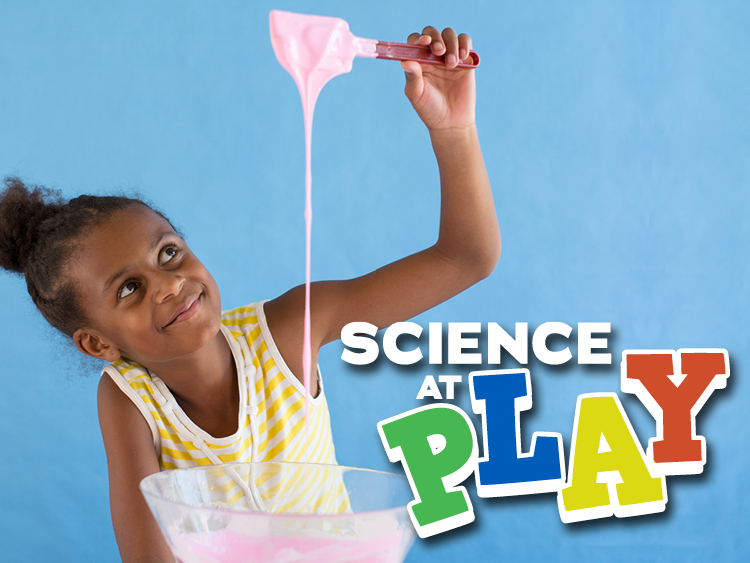Materials to Collect

- A trusted animal companion (dog, cat, bearded dragon, rabbit, etc.)
- Your pet’s favorite treats
- Two identical cups that you cannot see through
Try it Out
 *Note: Feel free to adjust this procedure for you and your pet. You know your pet and your training techniques best. Be sure to keep your procedure consistent between trials.
*Note: Feel free to adjust this procedure for you and your pet. You know your pet and your training techniques best. Be sure to keep your procedure consistent between trials.
- Place your two cups upside down at least 2 feet apart. The more distance you can put between your cups, the better.
- Hide a treat beneath one of the cups. Make sure your pet does not see you!
- Call your pet over as you point at the cup containing the treat.
- Repeat this process 3 more times to complete 4 trials. (Since you are testing to see if your animal responds to your cues and not trying to train them, it is OK to give your pet a treat no matter what cup they go to!)
What is the Science?
Have you ever communicated with someone simply with a gesture, or a look? Human communication has been studied extensively. We know that as infants grow and develop, they pay attention to what others are looking at or touching, following gazes and using our reactions to gauge their own. As a result, infants start to understand what adults are trying to communicate when they point. In other words, they start reading our cues or intentions. Intention reading is essential to human communication, but what about animals? Can they read our communicative intentions, such as pointing or nodding in given directions? Are they sensitive to our gestures, and can they use them to problem solve in new situations?
 Since there are two possible cups for pets to go to in this activity, without help, we would expect them to choose the correct cup about half of the time on average. However, if they are more successful, they could be reading your cues! My dog Zoe went to the indicated cup three times out of the four trials! Though, it was a little hard to predict where she was heading on this fourth trial. By then, her excitement level was higher than normal and she just slid across the floor past the cups.
Since there are two possible cups for pets to go to in this activity, without help, we would expect them to choose the correct cup about half of the time on average. However, if they are more successful, they could be reading your cues! My dog Zoe went to the indicated cup three times out of the four trials! Though, it was a little hard to predict where she was heading on this fourth trial. By then, her excitement level was higher than normal and she just slid across the floor past the cups.
Communication between animals and humans has been studied more in some animals than others. For example, we love to work with our closest relatives, chimpanzees! However, there is an animal that can read our communicative cues far better than chimpanzees and other primates–DOGS! Dogs possess an amazing ability to understand human communication. Similarly to infants, dogs are extremely sensitive to our gestures, and use them to help navigate new situations. Given the domestication of dogs from wolves, it makes sense that those who were better able to understand what humans were trying to communicate would fare better.
Ask Your Young Scientists
- Did your pet go to the correct cup? How many times did they get it right? For what percentage of trials was your pet correct?
- Take a look at your pet while they are performing this activity. Take a video if you can! Do they look at you before making a choice? Are they using any other senses to help them? (sense of smell, etc.)
- What other things can you try to test how you can communicate with your pet? (see below for some ideas)
More to Explore
- Try out different patterns of treat placement. For example, place it in the same cup twice and then switch. Did it throw your pet off? Did they always follow your point, or did they anticipate a pattern?
- Look at the cup containing the treat without pointing. Was your pet more, or less successful?
- Adjust the distance of the cups. Place one cup closer to your pet and place the treat in the far cup. Then, call your pet over while pointing at the far cup. They will need to pass the option closest to them to go to the cup you are indicating. Were they able to pass the first cup, or did they go to the closest option?
- Adjust your own position. Sit closest to the cup that does not contain the treat and point at the other cup. Did your pet go to you, or to the cup you were indicating?
- Do nothing. Simply call your pet over without trying to communicate any additional information. Do not look at either cup, or gesture in any way toward them. How many times did your pet go to the correct cup? Were they as successful without your help? If they are still choosing the correct cup the majority of the time even without your help, they might be using one of their senses. How do you think they might be finding the treat?
- If you have more than one pet, try this activity with all of them. Compare their performance. Did any animals perform better than others?
- This activity was adapted from The Genius of Dogs: How Dogs are Smarter Than you Think by Brian Hare and Vanessa Woods:
- As the founder of the Duke Canine Cognition Center, Brian Hare has pioneered revolutionary breakthroughs in cognitive science. While examining a variety of other members of the animal kingdom, this book dives into canine cognition in a fun and approachable way, exploring a kind of genius that dogs possess that allows them to communicate with their human companions like no other. If you’re interested in exploring further, this book has lots of other experiments to try!
- The ability of canines to communicate with humans has been studied for years, but what about other animals? What do we know about how they communicate with us? For example, our feline friends can often get a negative reputation. Listen to this podcast if you want to learn more about how they communicate with us! https://www.npr.org/2020/02/11/804955209/does-your-cat-really-hate-you
- Pets may be able to read our cues, but it can be harder to read their signals. Well, things just got easier for speech pathologist, Christina Hunger and her dog, Stella!
Resources:
Duke Canine Cognition Center – https://evolutionaryanthropology.duke.edu/research/dogs/research/understanding-communicative-intentions
The Genius of Dogs: How Dogs are Smarter Than you Think by Brian Hare and Vanessa Woods
https://www.livescience.com/17763-dogs-communication-intent.html
We want to see what you try at home. Share your creation with us on social media by using the #ScienceAtPlay and tagging @CTScienceCenter.




